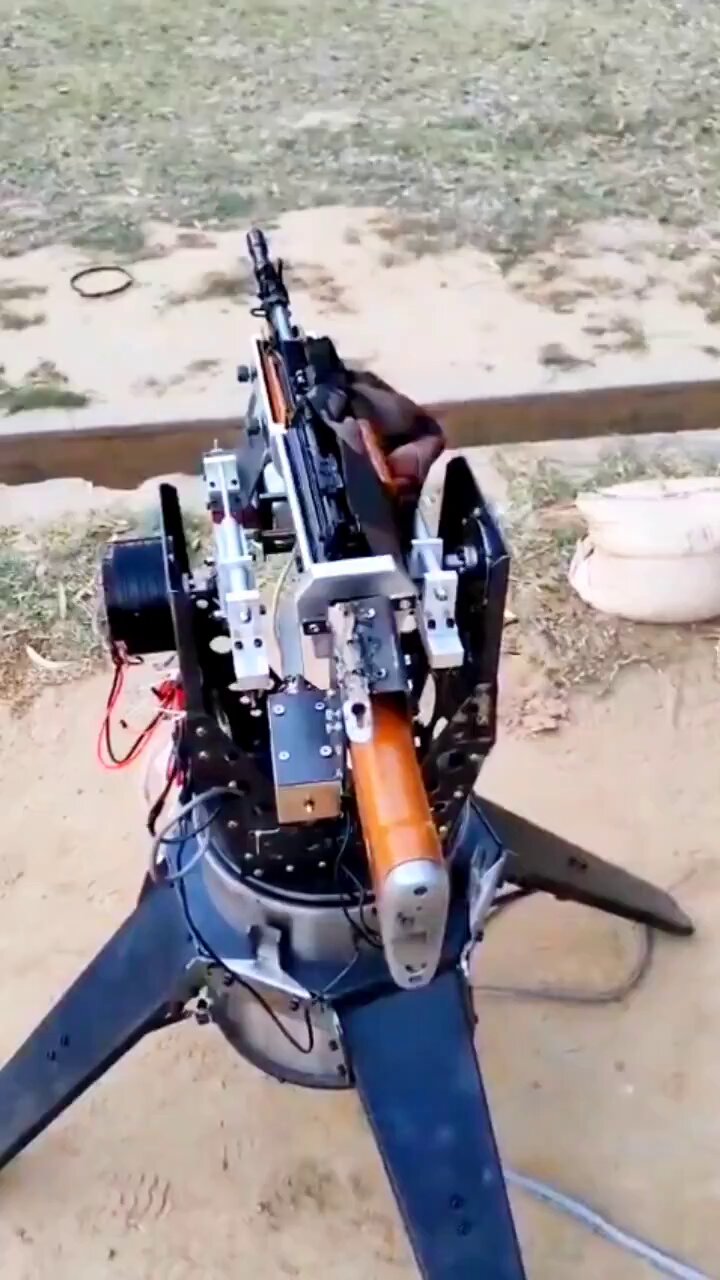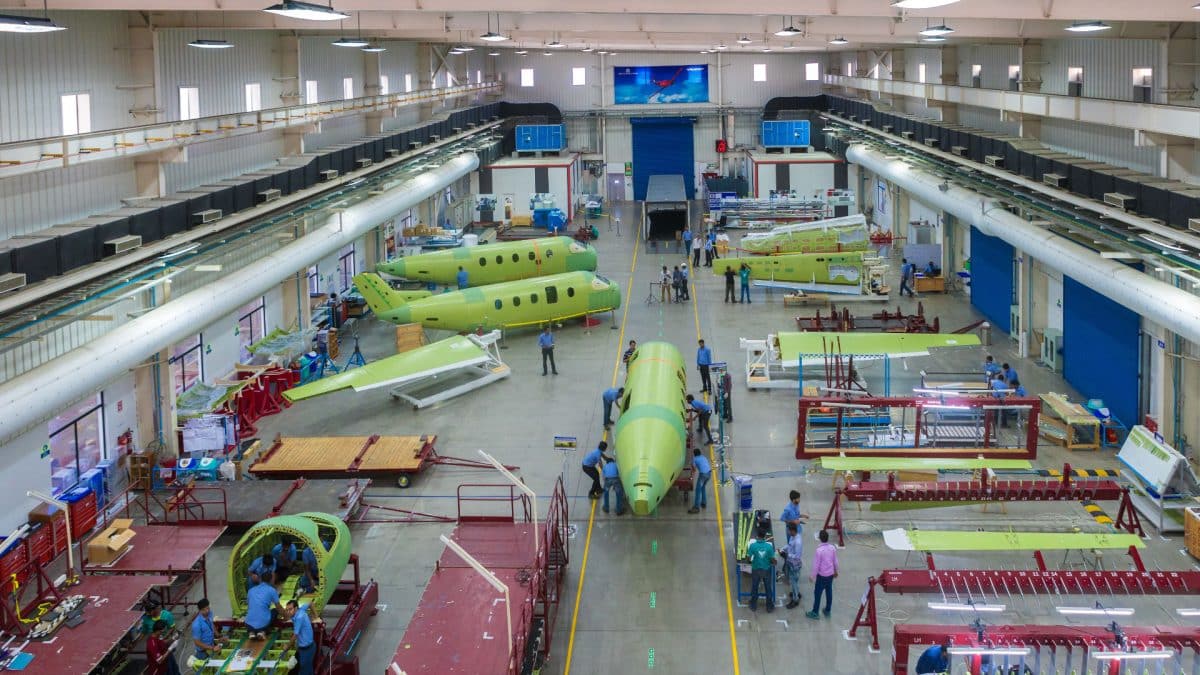SOURCE: RAUNAK KUNDE / NEWS BEAT / IDRW.ORG


The Gas Turbine Research Establishment (GTRE), a key arm of India’s Defence Research and Development Organisation (DRDO), has revealed ambitious plans for the 110kN thrust power plant slated to power the fifth-generation Advanced Medium Combat Aircraft (AMCA).
In a significant development, GTRE has confirmed that this engine will be designed with core upgradeability, enabling it to evolve into higher-thrust variants ranging from 125kN to 145kN. These advanced iterations are envisioned to propel a heavy-class fighter aircraft, potentially a sixth-generation platform, aimed at replacing the Indian Air Force’s (IAF) Su-30MKI fleet from 2045-50 onwards.
Continue readingSOURCE: RAUNAK KUNDE / NEWS BEAT / IDRW.ORG


In a significant leap toward enhancing India’s artillery capabilities, Noida-based IndoWings has developed the LM-250, a loitering munition system with a range of 20-25 kilometres, designed to be launched from the canister of the Pinaka Multi-Barrel Rocket Launcher (MBRL).
This innovative system promises to add a new dimension of precision and flexibility to the Indian Army’s existing arsenal, blending the destructive power of the Pinaka MBRL with the tactical advantages of loitering munitions.
Continue readingSOURCE: RAUNAK KUNDE / NEWS BEAT / IDRW.ORG


In a groundbreaking announcement, the Defence Research and Development Organisation (DRDO) has revealed its plans to develop and demonstrate a 300kW “Surya” Directed Energy Weapon (DEW) by 2027, marking a significant step forward in India’s pursuit of next-generation defence technologies.
The proposed system, designed to harness high-energy lasers for military applications, promises to deliver precision, speed, and scalability, positioning India among a select group of nations investing in directed energy solutions. With a modular configuration and cutting-edge technologies, the Surya DEW aims to counter a range of threats at ranges up to 20 kilometres, offering a glimpse into the future of warfare.
Continue readingSOURCE: AFI


In a significant step toward modernizing its armored forces, the Indian Army has released a Request for Information (RFI) on April 6, 2025, for the procurement of approximately 75 platform-based Counter Unmanned Aircraft Systems (C-UAS) with both soft-kill and hard-kill capabilities. These systems are intended to be integrated into the Army’s fleet of T-90 and T-72 main battle tanks (MBTs), enhancing their survivability against the growing threat of unmanned aerial systems (UAS) in modern warfare. This move underscores India’s commitment to adapting its military capabilities to address emerging battlefield challenges, particularly in the context of recent global conflicts where drones have played a pivotal role.
The Indian Army’s decision to equip its T-90 and T-72 tanks with advanced C-UAS systems comes in response to the evolving nature of warfare, where unmanned aerial vehicles (UAVs), including loitering munitions and kamikaze drones, have become increasingly prevalent. The ongoing Ukraine conflict has demonstrated the vulnerability of armored units to such threats, with drones and top-attack anti-tank guided missiles (ATGMs) causing significant losses to tanks lacking adequate countermeasures. Observations from this conflict have highlighted the need for integrated defense systems that can detect, track, and neutralize aerial threats autonomously, prompting the Indian Army to prioritize the protection of its armored assets.
Continue readingSOURCE: AFI


China’s largest “silent” research vessel, the Dong Fang Hong 3, has concluded a month-long survey of the Ninety East Ridge in the Indian Ocean Region (IOR) and is now departing the area, according to posts on X by open-source intelligence analyst @detresfa_ on April 4, 2025. The Ninety East Ridge, a linear intraplate rise on the ocean floor, is considered an ideal location for submarine operations due to its unique underwater topography.
The vessel’s activities have reignited concerns about China’s expanding maritime ambitions in the IOR, particularly given the dual-use nature of its research operations, which could enhance the People’s Liberation Army Navy’s (PLAN) submarine capabilities while also serving scientific purposes.
Continue readingSOURCE: AFI


Stealth fighter jets represent the pinnacle of modern military aviation, combining advanced aerodynamics, radar-evading technology, and cutting-edge materials to dominate the skies. The Lockheed Martin F-22 Raptor, Lockheed Martin F-35 Lightning II, and Chengdu J-20 Mighty Dragon are three of the most prominent fifth-generation fighters in service today.
While their stealth capabilities, avionics, and performance often take center stage in discussions, the design elements like surface area and the use of rivets play a critical role in their stealth profiles and overall functionality. In this article, we’ll compare these three jets in terms of their surface area and rivet usage, exploring how these factors influence their design and stealth characteristics.
Continue readingSOURCE: AFI


In a significant step toward integrating artificial intelligence (AI) into military technology, Dehradun-based BSS Materiel has conducted internal trials of its AI-driven autonomous weapon system designed for small arms. The trials, which took place recently, involved a prototype system for a 12.7mm caliber weapon, showcasing India’s growing focus on leveraging cutting-edge technology to enhance its defense capabilities.
BSS Materiel, a company based in Dehradun, Uttarakhand, has been working on integrating AI into small arms to create autonomous weapon systems capable of independent target identification and engagement. The prototype tested in the internal trials is designed for a 12.7mm caliber weapon, a heavy machine gun typically used for anti-materiel and anti-personnel roles. The system employs AI to enable autonomous operation, potentially allowing the weapon to detect, track, and engage targets without direct human intervention.
Continue readingSOURCE: IDRW.ORG


Solar Defence and Aerospace Limited, a rising star in India’s private defense sector and a subsidiary of Solar Industries, has announced the development of two innovative mine systems—Tandav and Bhoomastra—designed specifically for the Indian Army. The company revealed that these mines, created on its own initiative, will be offered in response to an upcoming Request for Information (RFI) from the Army for advanced mine technologies.
Solar Defence’s decision to develop Tandav and Bhoomastra suo moto—without an initial Army contract—highlights its strategic foresight and confidence in meeting the military’s evolving needs. While detailed specifications remain undisclosed, the evocative names suggest formidable capabilities: Tandav, invoking the destructive dance of Lord Shiva, and Bhoomastra, implying a powerful earth-based weapon. These systems are poised to address the Indian Army’s demand for modern, smart mines capable of bolstering both defensive and offensive operations along its borders, particularly in high-threat zones like the Line of Control (LoC) and Line of Actual Control (LAC).
Continue readingSOURCE: IDRW.ORG


In a groundbreaking advancement for soldier safety, the Defence Materials and Stores Research and Development Establishment (DMSRDE) in Kanpur, a unit of the Defence Research and Development Organisation (DRDO), has unveiled two specialized types of boots designed to protect India’s armed forces in some of the most perilous environments. Announced on March 28, 2025, these boots—one engineered to withstand landmine explosions and the other to shield against sharp spikes and hazards in dense forests—represent three years of rigorous research and innovation by DMSRDE scientists.
The first variant, tailored for troops operating in landmine-prone areas, is a marvel of engineering designed to counter the devastating impact of explosions. Capable of protecting soldiers from landmines with an explosive weight of up to 125 kg, these boots mitigate the extreme pressure generated during a blast—approximately 42,000 kg per square centimeter—by a factor of 160. This reduction ensures that the force transmitted to the soldier’s feet and legs is minimized, significantly enhancing survival rates and reducing injury severity.
Continue readingSOURCE: AFI


In a strategic move to counter China’s expanding naval presence in the Indian Ocean Region (IOR), India is set to commission a new naval base for nuclear submarines and warships in coastal Andhra Pradesh by 2026. The base, located near the small village of Rambilli, approximately 50 km south of the Eastern Naval Command headquarters in Visakhapatnam, is part of India’s broader effort to strengthen its maritime capabilities.
This development, reported by The Times of India on April 7, 2025, coincides with ongoing upgrades to the Karwar naval base in Karnataka, signaling India’s intent to enhance both its eastern and western seaboards amid growing regional security challenges.
Continue readingSOURCE: AFI


In a significant boost to India’s aerospace and defense sector, Tata Advanced Systems Limited (TASL) has acquired a 7.4 lakh square foot plot in Karnataka’s Vemgal Industrial Area to establish a state-of-the-art aircraft manufacturing facility. The deal, valued at ?29.34 crore, was finalized with the Karnataka Industrial Areas Development Board (KIADB) under a lease-cum-sale agreement registered on February 24, 2025. The facility, which will include a final assembly line as well as Maintenance, Repair, and Overhaul (MRO) capabilities, marks a pivotal step toward enhancing India’s self-reliance in defense manufacturing while aligning with the government’s “Make in India” and “Atmanirbhar Bharat” initiatives.
The Vemgal Industrial Area, located along the Kolar-Chikkaballapur Road (SH-96) in Karnataka’s Kolar district, is approximately 10 km from the Narasapura and Jakkasandra industrial zones and about 38 km from Bengaluru. Spanning 666 acres, this industrial hub has become a preferred destination for high-value manufacturing, particularly in the aerospace and defense sectors. Bengaluru, often dubbed India’s aerospace capital, already hosts a thriving ecosystem of aviation and defense technology firms, making it an ideal location for TASL’s new venture.
Continue readingSOURCE: AFI

Odisha is steadily cementing its reputation as an industrially rich state, with a transformative project set to elevate its economic landscape. The Odisha government has greenlit the establishment of a titanium complex in Ganjam district, backed by an impressive investment of Rs 8000 crore. This ambitious initiative promises not only to generate significant employment opportunities but also to inject fresh momentum into the local economy, marking a pivotal step toward the state’s industrial and technological advancement.
The titanium complex is a flagship project under the Indo-Kazakh joint venture company (JVC), IREUK Titanium Limited, a collaboration between the Department of Atomic Energy (DAE), Government of India, and Kazakhstan’s Ust-Kamenogorsk Titanium and Magnesium Plant JSC (UKTMP JSC). This partnership, formalized in November 2024, leverages the strengths of both nations to create a robust titanium value chain within India. IREL (India) Limited, a central public sector undertaking under the DAE, will supply surplus ilmenite from its Odisha operations, while UKTMP JSC brings its globally recognized expertise in titanium production, including technology for manufacturing titanium slag.
Continue readingSOURCE: AFI


In a provocative statement published on April 7, 2025, in The Express Tribune, Air Commodore (Retd) Zahid Ul Hassan of the Pakistan Air Force (PAF) has claimed that the PAF is set to maintain a qualitative edge over the Indian Air Force (IAF) for the next 10 to 15 years. Hassan’s analysis hinges on the PAF’s ongoing efforts to fully operationalize its 5th generation platforms, while the IAF grapples with a strategic dilemma between pursuing self-reliance and opting for direct acquisitions.
This development, coupled with Pakistan’s focus on co-producing and acquiring 5th generation aircraft equipped with long-range stand-off weapons and first-shot capabilities, is likely to create significant challenges for the IAF, especially as China advances toward 6th generation aircraft for its air force.
Continue readingSOURCE: AFI


Taiwan marked a significant milestone in its defense strategy as its first domestically built submarine, the Hai Kun (SS-711), commenced sea trials, a development reported by Army Recognition. The submarine, constructed by the state-backed CSBC Corporation, is a cornerstone of Taiwan’s Indigenous Defense Submarine (IDS) program, aimed at strengthening its naval capabilities amid escalating tensions with China.
The Hai Kun’s trials, which began as scheduled despite earlier funding challenges, underscore Taiwan’s determination to counter the growing threat of a Chinese invasion, particularly as the People’s Liberation Army Navy (PLAN) intensifies its activities in the region.
Continue readingSOURCE: RAUNAK KUNDE / NEWS BEAT / IDRW.ORG


The Indian Air Force (IAF) is laying the groundwork for a transformative leap in unmanned warfare, with plans to develop a supersonic Unmanned Combat Aerial Vehicle (UCAV) boasting a massive 4-ton internal weapons bay (IBW) capacity and supercruise capability.
This ambitious vision, revealed through sources cited by idrw.org, complements the IAF’s ongoing commitment to kick-start the Aeronautical Development Establishment’s (ADE) proposed Ghatak UCAV—a 13-ton stealth platform with a 1.5-ton IBW. Together, these initiatives signal the IAF’s long-term strategy to field advanced, low-observable UCAVs capable of dominating future battlefields, though the supersonic variant remains a distant goal, potentially 10-15 years away.
Continue reading